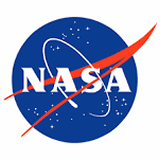|
1915
|
|
3.3.1915
NACA, the predecessor of NASA, is founded.
|
|
|
1958
|
|
10.1.1958
NASA is created to replace NACA.
|
|
10.11.1958
Pioneer program: NASA launches the lunar probe Pioneer 1 (the probe falls back to Earth and burns up). |
|
|
1959
|
|
4.9.1959
Project Mercury: NASA announces the selection of the United States' first seven astronauts, whom the news media quickly dub the "Mercury Seven".
|
|
|
1960
|
|
9.8.1960
In Huntsville, Alabama, US President Dwight D. Eisenhower formally dedicates the Marshall Space Flight Center (NASA had already activated the facility on July 1).
|
|
|
1961
|
|
10.27.1961
NASA launches the first Saturn I rocket in Mission Saturn-Apollo 1. |
|
|
1962
|
|
1.10.1962
Apollo Project: NASA announces plans to build the C-5 rocket booster. It became better known as the Saturn V moon rocket, which launched every Apollo moon mission. |
|
4.26.1962
NASA's Ranger 4 spacecraft crashes into the Moon. |
|
8.27.1962
The Mariner 2 unmanned space mission is launched to Venus by NASA. |
|
12.13.1962
NASA "Relay 1" launch, first active repeater communications satellite in orbit. |
|
12.14.1962
NASA's ''Mariner 2'' becomes the first spacecraft to fly by Venus. |
|
|
1964
|
|
|
1965
|
|
3.23.1965
NASA launches Gemini 3, the United States' first two-man space flight (crew: Gus Grissom and John Young). |
|
3.24.1965
NASA spacecraft Ranger 9, equipped to convert its signals into a form suitable for showing on domestic television, brings images of the Moon into ordinary homes before crash landing. |
|
6.3.1965
Launch of ''Gemini 4'', the first multi-day space mission by a NASA crew. Crew-member Ed White performs the first American spacewalk. |
|
|
1966
|
|
6.8.1966
One of the XB-70 Valkyrie prototypes is destroyed in a mid-air collision with a F-104 Starfighter chase plane during a photo shoot. NASA pilot Joseph A. Walker and United States Air Force test pilot Carl Cross are both killed. |
|
11.11.1966
NASA launches Gemini 12.
|
|
|
1967
|
|
11.9.1967
Apollo program: NASA launches the unmanned Apollo 4 test spacecraft atop the first Saturn V rocket from Cape Kennedy, Florida. |
|
|
1968
|
|
4.4.1968
Apollo program: NASA launches Apollo 6.
|
|
10.11.1968
Apollo program: NASA launches ''Apollo 7,'' the first successful manned Apollo mission, with astronauts Wally Schirra, Donn F. Eisele and Walter Cunningham aboard. |
|
|
1969
|
|
11.14.1969
Apollo program: NASA launches Apollo 12, the second manned mission to the surface of the Moon. |
|
|
1970
|
|
9.2.1970
NASA announces the cancellation of two Apollo missions to the Moon, Apollo 15 (the designation is re-used by a later mission), and Apollo 19. |
|
|
1973
|
|
11.3.1973
Mariner program: NASA launches the ''Mariner 10'' toward Mercury. On March 29, 1974, it becomes the first space probe to reach that planet.
|
|
|
1974
|
|
3.29.1974
NASA's Mariner 10 becomes the first spaceprobe to fly by Mercury. It was launched on November 3, 1973.
|
|
|
1975
|
|
8.20.1975
Viking Program: NASA launches the Viking 1 planetary probe toward Mars.
|
|
|
1976
|
|
|
1980
|
|
11.12.1980
The NASA space probe ''Voyager I'' makes its closest approach to Saturn and takes the first images of its rings. |
|
|
1982
|
|
3.4.1982
NASA launches the Intelsat V-508 satellite.
|
|
|
1988
|
|
|
1992
|
|
9.12.1992
NASA launches Space Shuttle ''Endeavour'' on STS-47 which marked the 50th shuttle mission. On board are Mae Carol Jemison, the first African-American woman in space, Mamoru Mohri, the first Japanese citizen to fly in a US spaceship, and Mark Lee and Jan Davis, the first married couple in space. |
|
|
1993
|
|
8.21.1993
NASA loses contact with the Mars Observer spacecraft.
|
|
|
1994
|
|
10.12.1994
NASA loses radio contact with the Magellan spacecraft as the probe descends into the thick atmosphere of Venus (the spacecraft presumably burned up in the atmosphere). |
|
|
1996
|
|
2.17.1996
NASA's Discovery Program begins as the NEAR Shoemaker spacecraft lifts off on the first mission ever to orbit and land on an asteroid, 433 Eros. |
|
8.6.1996
NASA announces that the ALH 84001 meteorite, thought to originate from Mars, contains evidence of primitive life-forms.
|
|


